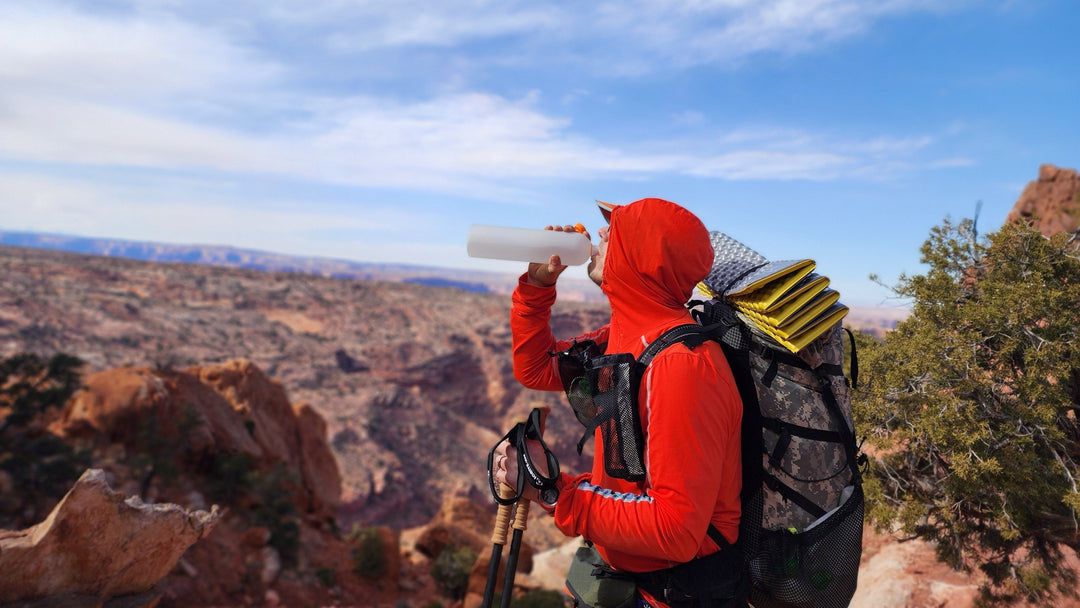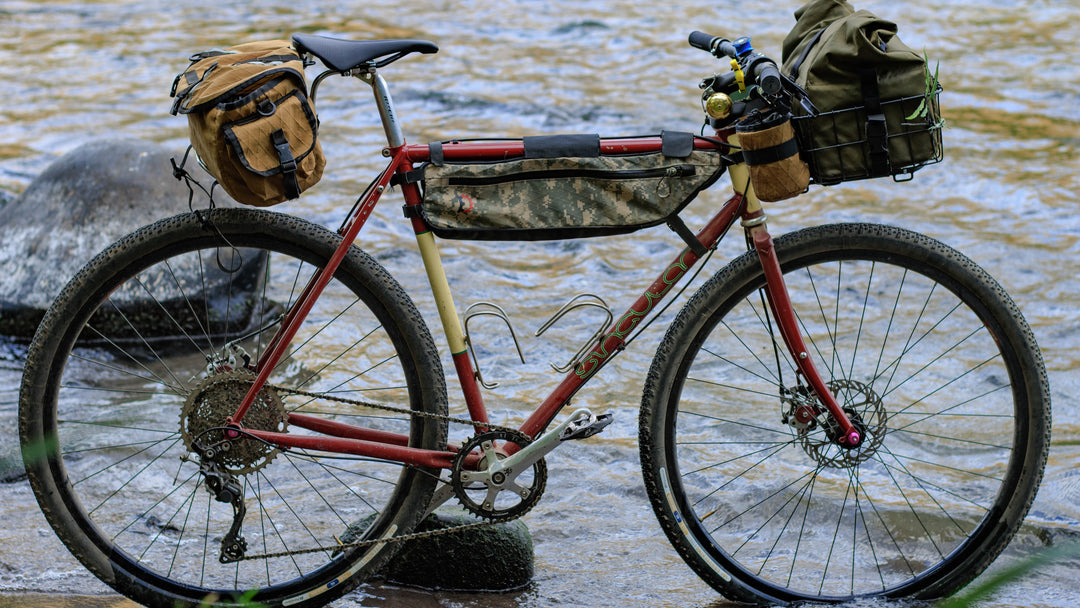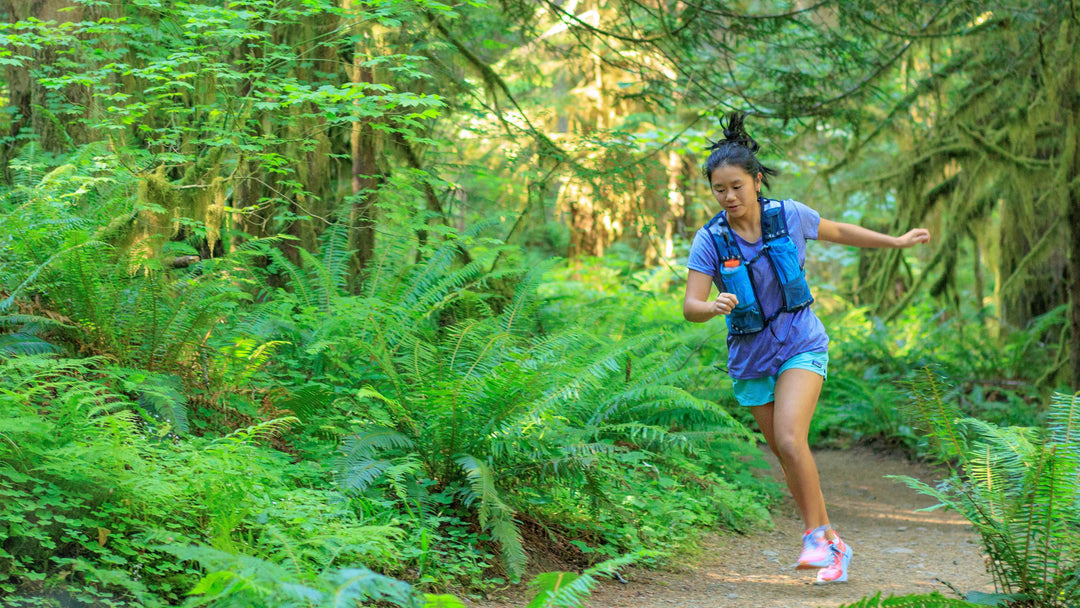Bikepacking With Young Kids

What do you think about when you hear "Bikepacking"? A long, fast, enduring adventure? Something remote and challenging? Maybe even a bit dangerous? This is what I had in mind too, and if you’re like me, this combination of expectations doesn't include kids, especially not young ones. Before calling me crazy, hear me out on this idea: Bikepacking with (young) kids.
If you come from the world of backpacking (like me), you know that backpacking with kids is pretty limited, especially when they are young (you can read more about it here: Family Fun: Backpacking Ideas from Toddlers to Teens and Beyond). Unlike walking with a pack, cycling is much faster, especially for kids, especially if they are not carrying gear and being partially carried or rolled. Even with younger kids, bikepacking means you can have a great day outdoors with some longer mileage, lots of views and some solitude.
For our family, bikepacking allows us to finally feel like we accomplish something - my 7 year old daughter shredding the trails, feeling free and independent, while my 5 year old tags along behind me, telling me all the ways Ninjagos and Jedis work together. At the same time, my wife and I get a true adventure of miles, dust, sweat and views. All that leads to glorious backcountry camping, and since you get to ride beyond the regular backpacking distance, it usually means solitude too. How can you say no?

The key for any good adventure with kids, especially younger ones, is preparation, contingencies and taking it easy. Beyond that, here are some extra ways to make this adventure happen:
In and out is the way to go
Though we hate going back the way we came, in and out is really the best way to deal with kid adventures. Teenagers might be able to go for a loop or even a thru trail, but for younger kids, you want to know you can make it back: in and out adventures, especially with overnights, means that you know exactly how hard the way back will be.
Like any other adventurer, I always want to get to a defining point or landmark: a peak, a river, a lake. But younger kids are much less fussed about it: they love the trees, the rocks, and even that tiny stream. All those little "findings" are enough for them to feel that the adventure is sufficient without trying to reach some lofty goal.
It is useful to try and find a route that has as many exciting things as possible, but think small and close, not big and inspiring. Kids like to throw rocks into the lake, hide in hollow trees or dip toes in the river - big vistas tend to be a bit lost on them.
Last thing to remember about in and out trips, especially overnights: the way back looks different. In our heads (as adults) we think that it is the same route, but in reality, the time of day and the different perspective creates different views, highlights and conditions.

Gravel is better than single track
Single tracks are fun, exciting and tend to be in beautifully remote locations, but these features tend not to translate very well to a wobbly child on a bike, an unwieldy tag-a-long or cumbersome trailer. When it comes to hauling kids at a moderate speed, gravel rules: these roads tend to be wider, quiet and relatively easy to navigate.
To make things easier, gravel roads tend to be in forest lanes and are easily accessible. The kids can (if there is no traffic) try and ride a bit faster ahead or even engage in some friendly "racing" with their parents.
It is important to remember that gravel can hurt bike tires, so make sure you have all the tools to fix a flat for everyone, maybe even twice.

Have more than one potential stop
This is probably the most important part with any overnight adventure with young kids: have multiple potential camping spots. It might seem obvious, redundant or downright annoying to only pick trails with several camping spots; but, in our experience, the ability to quickly pivot from cycling to camping saved many, many trips.
This mindset is even more important when dealing with kids who aren’t used to long cycles: Can they go for 5 miles? 10? 25? When we went bikepacking as a family for the first time, our 6 year old managed to cycle a whopping 10 miles on gravel! We were not prepared for such success, but she did it. The trail we picked had several other camping spots both earlier and later on, but she managed to push it to 10 miles and we had a good space already identified.
So what does that mean? Pick a place that allows dispersed camping along the route (which, hopefully, is a gravel road), either carrying all your water or being ready to do a water haul from a different location. The ability to go and source water from another location (we just carry several empty 3L Vectos) means that you are not tied to a water source to camp.
Alternatively, spend a lot of time poring over maps finding routes that have several "optimal" camping spots along the way. And once you find one, don't tell anyone, as those places are gold for family trips.
Pack light but luxurious
Especially for younger kids who are new to longer adventures (true for adult newbies too), luxury at camp makes all the difference. Even after a long day on the saddle, give the kids a plush camping spot, books, maybe even a toy that you didn't tell them about, and they are in heaven.
Take good food with a few options, or borrow some ideas from bike-touring outfits and offer wonderful spreads. You will not be opting for speed, so you might as well work on the endurance of carrying too much stuff.
Oh, and take the stuffy, even two: it’s worth it!

Pick a Mule
Chances are, if you have chosen to drag your kids on a bikepacking trip, at least one of the adults has done it alone or with other adults in the past. If that’s not the case, I recommend exploring some adult-only bikepacking before dragging your kids into it.
Most likely, the bikepacker in the family is also the person reading this! And you're probably itching to show your future generations the joys of bikepacking. Congratulations, you have been selected to be a mule! Every trip needs a mule, and this isn’t just what you plan on carrying, this is also about what you will be able to carry. Let's face it: the kids are not going to carry anything. If you are lucky, they'll be carrying themselves, but all the rest of the stuff? Someone needs to carry it, and since we are mixing in a specific activity (cycling), the mule is not the strongest person, as usually happens when backpacking, but the best cyclist.
The reason the most experienced cyclist carries the most is because they need to balance things well and (above all) avoid crashing with a heavy haul (and maybe a child in tow), so technical experience wins here.
Pro tip: Have the potential for extra carry, like an unused rack with some bungee cords. The mule gets to carry all the extra stuff that the over-enthusiastic kid insisted on strapping to their bike, or maybe water for the dry camp (see above).

Allow for independence
This is a slightly contentious point, especially with the potential of at least one neurotic adult, but - let the kids have freedom. Usually on backpacking trips, the kids struggle to even keep up with a full grown hiking adult, but when cycling, there is a good chance they can "blast ahead" at times. And they should!
Yes, they might lose balance and get a couple of scrapes, but mainly, they will enjoy the kind of cycling freedom that will only be available to them for a limited time, so let them get a taste.
By the way, they are more likely to go further when allowed to "lead the trip" at a higher speed.

End early
“Start late and end early” is how we like to do things, but if starting late is not your thing, make sure that ending early is. Despite the temptation to stay longer in the sleeping bag and take ages to figure out how to repack everything, opt for an early start. Most kids will get tired by lunchtime, so beating the crash is a winner and a great way to avoid tantrums.
With this comes a huge carrot: Grabbing lunch on the road after leaving the trailhead. Though if you opt for this, give them a snack before starting to drive, since lunch never comes quickly enough when your kids need it...

Have fun!
The ultimate cliché of any kind of an adventure post, but hey - clichés are true!
Show the kids that even when you are all dusty, sweaty and saddle sore, this is still a lot of fun. And the best way to do this is by having fun (or faking it until you are making it): a win win.
Your infectious fun will increase the chances that this first bikepacking trip will turn into a 2nd, 3rd and more. Though we only go bikepacking once or twice a year, it is still one of the things our kids ask the most to do, even with falls, hard climbs and dry stretches.
Bikepacking is fun!











Leave a comment